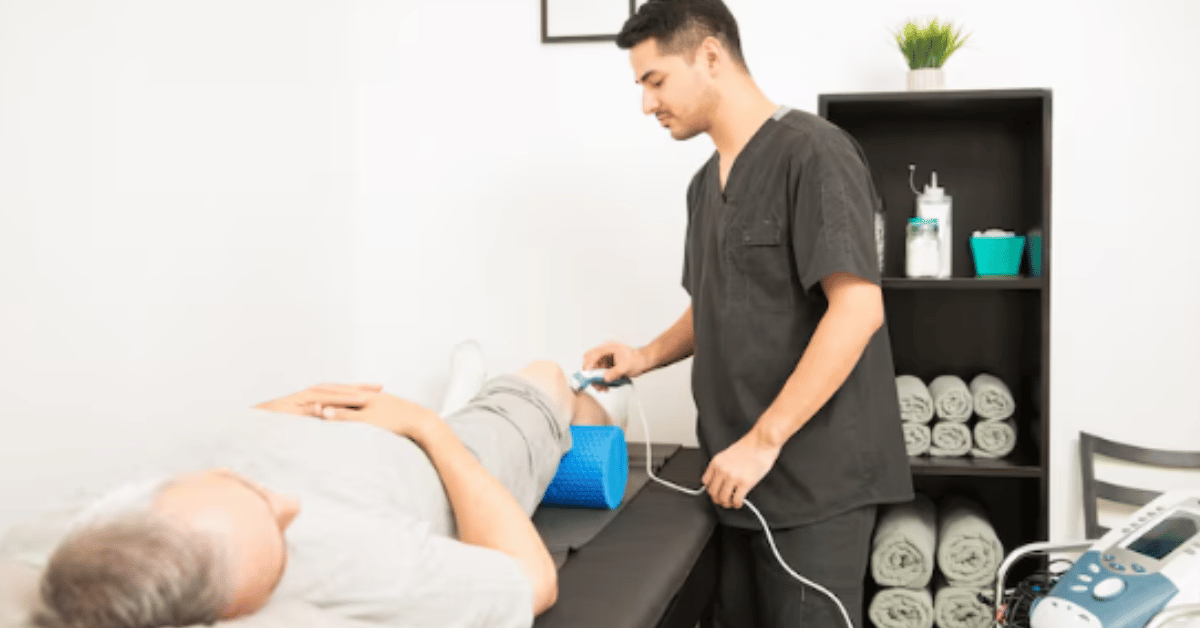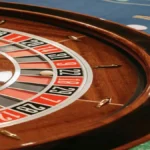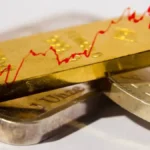Pulsierende Signal Therapie (PST), or Pulsating Signal Therapy, has emerged as a novel approach to addressing musculoskeletal discomfort, joint regeneration, and circulatory health challenges. At its core, this therapy relies on the principle of applying low-frequency, pulsating electromagnetic signals to targeted regions of the body, thereby stimulating the natural repair mechanisms that often slow with age or injury. Searchers seeking information on pulsierende Signal Therapie often want clarity about what it is, how it works, and whether it represents a trustworthy solution for chronic pain, arthritis, or post-surgical recovery. In simple terms: it is a non-invasive treatment option designed to encourage biological healing at the cellular level by enhancing circulation, supporting tissue oxygenation, and promoting metabolic repair.
The rise of PST is tied to growing interest in non-pharmaceutical and non-surgical medical alternatives, particularly for conditions like osteoarthritis, sports injuries, and bone degeneration. For many patients, the promise of fewer side effects compared to medication, combined with a focus on the body’s natural healing response, has made it an attractive option. In clinics across Europe, PST has been integrated into treatment plans not as a replacement for traditional medicine, but as a complementary therapy. Advocates argue it helps reduce reliance on painkillers, improves mobility, and can extend the lifespan of joint replacements by maintaining bone vitality.
Yet, questions remain: Is pulsierende Signal Therapie backed by science? How does it differ from other electromagnetic therapies? And what are the practical implications for patients navigating chronic pain or sports rehabilitation? This article explores the science, patient experiences, and broader cultural meaning of PST, offering a comprehensive guide to one of the most discussed therapies in modern regenerative medicine. As one clinician notes, “The aim is not to mask symptoms, but to awaken the body’s ability to repair itself.”
The Science Behind Pulsierende Signal Therapie
The underlying science of pulsierende Signal Therapie rests on electromagnetic induction, a concept first recognized in physics centuries ago but only recently applied to cellular regeneration. The therapy employs low-frequency, pulsed signals that penetrate tissues and bones without invasive procedures. These signals interact with ions and charged particles within cells, altering membrane potentials and enhancing cellular metabolism. By improving the efficiency of ion exchange, cells receive more oxygen and nutrients while waste products are expelled more effectively.
In clinical terms, this interaction is thought to encourage cartilage repair in joints, slow down inflammatory processes, and accelerate bone regeneration. Laboratory studies suggest that electromagnetic fields may stimulate osteoblast activity—the cells responsible for forming new bone. This has significant implications for patients recovering from fractures, hip replacements, or degenerative joint diseases. Unlike static magnetic therapies, pulsating signals create a rhythmic influence, which mimics the body’s own bioelectric activity.
Proponents often describe PST as a “signal to the body,” reminding tissues to restart their repair processes. Critics, however, caution that while cellular-level studies are promising, large-scale randomized trials remain limited. Despite ongoing debates, the scientific basis—rooted in physics and bioelectric medicine—positions PST within a broader movement toward energy-based therapies that bridge traditional biology with modern technology.
Clinical Applications and Patient Experiences
Pulsierende Signal Therapie is most widely recognized for its role in managing osteoarthritis. Patients often report reduced stiffness, improved joint flexibility, and decreased reliance on pain medication after undergoing a series of PST sessions. These sessions typically last between 30 and 60 minutes and are administered over several weeks. The therapy is non-invasive, does not require anesthesia, and is considered safe for elderly patients.
Beyond arthritis, PST is also applied in sports medicine. Athletes recovering from ligament injuries or tendon strains use it as a supplementary therapy to accelerate healing. Some clinics incorporate PST into post-surgical recovery plans, arguing it can improve circulation around implants or prosthetics. Patients frequently describe the treatment as painless, with sensations limited to mild warmth or vibration, if any.
Patient testimonials highlight the emotional dimension of PST. Many express relief at finding a non-drug solution, especially those wary of long-term side effects of analgesics. “After months of relying on painkillers, I felt I was finally taking control of my body again,” one patient shared. However, expectations vary; some report significant improvements while others note only marginal benefits. This variability underscores the need for personalized treatment approaches and further clinical study.
Comparing PST to Other Therapies
| Therapy Type | Mechanism | Invasiveness | Typical Use Cases | Patient Tolerance |
|---|---|---|---|---|
| Pulsierende Signal Therapie (PST) | Low-frequency pulsed electromagnetic signals stimulate cellular repair | Non-invasive | Arthritis, bone regeneration, sports recovery | High |
| Transcutaneous Electrical Nerve Stimulation (TENS) | Electrical impulses block pain signals | Non-invasive | Pain management, nerve pain | High |
| Physical Therapy | Manual movement and exercise-based rehabilitation | Non-invasive | Muscle strengthening, mobility restoration | High |
| Joint Replacement Surgery | Artificial implant replaces damaged joint | Invasive | Severe osteoarthritis, joint damage | Moderate to low (recovery dependent) |
| Pain Medication | Chemical relief through anti-inflammatory or analgesic drugs | Non-invasive | Broad pain management | Variable, side effects possible |
This comparison highlights PST as a middle ground: more targeted than physical therapy alone, less invasive than surgery, and often preferable to long-term medication use.
Mechanisms of Healing: A Cellular Perspective
One of the most compelling aspects of pulsierende Signal Therapie is its cellular-level impact. Research suggests that pulsed signals enhance microcirculation, delivering more oxygen to tissues that suffer from hypoxia during inflammation. Increased oxygenation not only supports energy production within mitochondria but also enhances collagen synthesis, a critical component of joint repair.
Additionally, PST is thought to influence cytokine activity—molecules that regulate inflammation. By modulating cytokine balance, PST may reduce chronic inflammatory states that damage cartilage and bone. This makes it particularly valuable in degenerative diseases where the body’s repair response is often overwhelmed.
On a neurological level, some evidence suggests PST signals may influence pain perception pathways. While not fully understood, the therapy may reduce hyperactive nerve firing, thereby providing relief beyond mechanical repair. Together, these effects create a holistic approach: improving physical structure while simultaneously addressing pain.
Integration into Holistic Medicine Practices
As holistic medicine gains momentum, PST has been integrated alongside acupuncture, physiotherapy, and mindfulness practices. Clinics emphasize the therapy’s compatibility with lifestyle changes such as improved diet, exercise, and stress reduction. The argument is not that PST is a cure-all, but that it fits into a broader philosophy of treating patients as whole beings rather than isolated conditions.
One wellness practitioner described it as “a bridge between modern technology and natural healing.” Patients often appreciate this approach because it avoids the binary choice of either surgery or lifelong medication. Instead, PST becomes part of a layered treatment strategy.
Insurance coverage remains limited in many countries, reflecting skepticism within mainstream medical institutions. Yet, patient demand continues to grow, often driven by word of mouth. As awareness expands, integration into conventional healthcare may increase, particularly if cost-benefit analyses show reductions in long-term healthcare expenses.
Table: Reported Benefits and Limitations of PST
| Reported Benefits | Evidence Strength | Reported Limitations | Patient Notes |
|---|---|---|---|
| Pain reduction | Moderate (clinical trials, testimonials) | Not universally effective | “Some relief within weeks, but results varied.” |
| Improved mobility | Moderate | Requires multiple sessions | “Best results came after several treatments.” |
| Reduced reliance on medication | Low to moderate | Limited insurance coverage | “Fewer painkillers after therapy.” |
| Enhanced bone/cartilage regeneration | Low (preclinical, early studies) | Long-term effects uncertain | “Hopeful for slowing arthritis progression.” |
| Non-invasive and safe | Strong | Costly in some clinics | “Painless, easy to tolerate.” |
Current Research and Future Directions
Research on pulsierende Signal Therapie is evolving, with ongoing studies examining its effects on chronic back pain, diabetic neuropathy, and osteoporosis. Preliminary findings indicate that pulsed signals may also influence vascular health, suggesting potential applications in wound healing and circulatory disorders. These possibilities expand the therapy’s relevance beyond orthopedics into broader regenerative medicine.
Future research aims to identify which patient populations benefit most. Genetic factors, age, and lifestyle may all influence responsiveness to PST. Additionally, advances in technology could refine signal frequencies, intensities, and delivery methods, allowing for more personalized treatments. As healthcare moves toward precision medicine, PST may become a tool tailored to individual biological signatures rather than a one-size-fits-all therapy.
“The more we understand the language of cells, the better we can craft therapies that speak directly to them,” remarked one researcher studying electromagnetic applications. This vision captures both the promise and challenge of PST: translating physics into healing without overpromising results.
Ethical Considerations and Patient Advocacy
While PST offers hope, ethical considerations remain central. Clinics must ensure patients are fully informed about what the therapy can and cannot achieve. Transparency is essential to avoid false expectations. Critics argue that marketing PST as a “miracle cure” risks undermining its credibility. Advocates respond that patient choice should be respected, provided information is accurate and balanced.
Patient advocacy groups emphasize affordability and accessibility. In many regions, the cost of PST remains prohibitive, limiting access to those with financial means. Wider adoption may depend on demonstrating long-term healthcare savings, such as reduced surgical rates or fewer hospital admissions due to joint degeneration.
Ultimately, the ethical question revolves around balance: promoting innovation while safeguarding patients from exploitation. In the words of one ethicist, “New therapies must walk the line between hope and evidence.”
Conclusion
Pulsierende Signal Therapie stands at the crossroads of science, technology, and patient-driven demand for alternatives to invasive treatments. It is not a panacea, but its capacity to stimulate natural repair processes makes it one of the most intriguing therapies of modern regenerative medicine. For individuals living with chronic joint pain, sports injuries, or post-surgical complications, PST represents more than just a treatment—it symbolizes the possibility of harnessing the body’s intrinsic healing abilities.
While scientific validation is still in progress, patient experiences suggest tangible benefits, particularly in reducing pain and improving mobility. Its appeal lies in its non-invasive nature and the promise of fewer side effects than traditional medications. As research evolves and accessibility improves, PST could move from a niche therapy to a recognized component of mainstream medicine.
“The future of healing is not about replacing the body, but reminding it how to heal itself,” said a practitioner who has worked with PST for over a decade. This sentiment encapsulates the therapy’s essence: not as a replacement for conventional treatments, but as a complement that empowers patients to reclaim quality of life.
FAQs
Q1. What is pulsierende Signal Therapie used for?
It is primarily used for joint pain, arthritis, bone regeneration, and post-surgical rehabilitation through non-invasive pulsed signals.
Q2. How does pulsierende Signal Therapie differ from regular physiotherapy?
While physiotherapy relies on movement and exercise, PST uses electromagnetic signals to stimulate cellular repair at deeper levels.
Q3. Is pulsierende Signal Therapie safe for elderly patients?
Yes, it is considered safe, non-invasive, and painless, making it suitable even for older adults with degenerative conditions.
Q4. How many sessions are typically needed to see results?
Most patients undergo 10–20 sessions over several weeks, with noticeable improvements often appearing after the first few weeks.
Q5. Is pulsierende Signal Therapie covered by health insurance?
Coverage varies by country and provider. Many regions still consider it an alternative therapy, so patients often pay privately.











